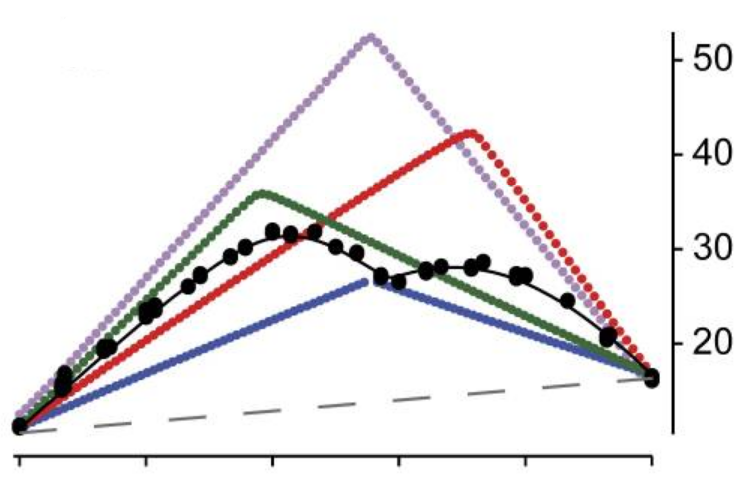Calcium ions (Ca2+) are vital messengers in all cells. Intracellular Ca2+ concentrations are tightly regulated. When Ca2+ enters a cell, numerous processes decode the properties of the signal and initiate cellular functions. Too much Ca2+ is cytotoxic, so cells have evolved processes to turn off the flux of Ca2+ from the source. The SK family of genes encode ion channel proteins that conduct potassium ions (K+) out of a cell in response to an increase in intracellular Ca2+. It is believed that SK channels help to restore an excited cellular membrane back to its resting potential as part of a Ca2+ feedback loop. The feedback is necessary to terminate the flow of Ca2+ through voltage gated channels that conduct Ca2+ into a cell.
SK channels decode Ca2+ via the ubiquitous and versatile protein, calmodulin (CaM). CaM binds tightly to SK with or without Ca2+; however, Ca2+ binding to CaM causes a change in association with SK that results in a higher open probability of SK channels, i.e. SK becomes conductive when Ca2+ binds to CaM. We found that CaM has complicated associations with SK that require an intricate study of how Ca2+ can initiate a response in SK activity. The SK/CaM interaction also provides a good model system to study how CaM transduces a Ca2+ stimulus into a molecular response. To understand the mechanism, we pursue quantitative measurements of thermodynamic parameters that can be used to develop models for how the proteins function.
Our approach uses multiple biochemical techniques to measure binding constants and to determine stoichiometries. Of particular interest is the use of multi-angle light-scattering (MALS) to accurately quantify the stoichiometry and association constants of CaM binding to SK peptides. Stoichiometries are measured at various molar ratios of CaM and target peptide. MALS is also used to measure affinity constants that are needed to determine how the associations change as a function of Ca2+. An initiative of Dr. Brent Halling, using MALS to study complex formation between SK peptides and CaM has lead to a collaborative effort in our lab to find out how changes in protein binding constants can alter both ion binding affinities of CaM sites and SK channel activity. Light-scattering is corroborated by luminescent energy transfer studies of ions binding to CaM and electrophysiological analysis of heterologously expressed SK channels performed by Ashley Philpo.

